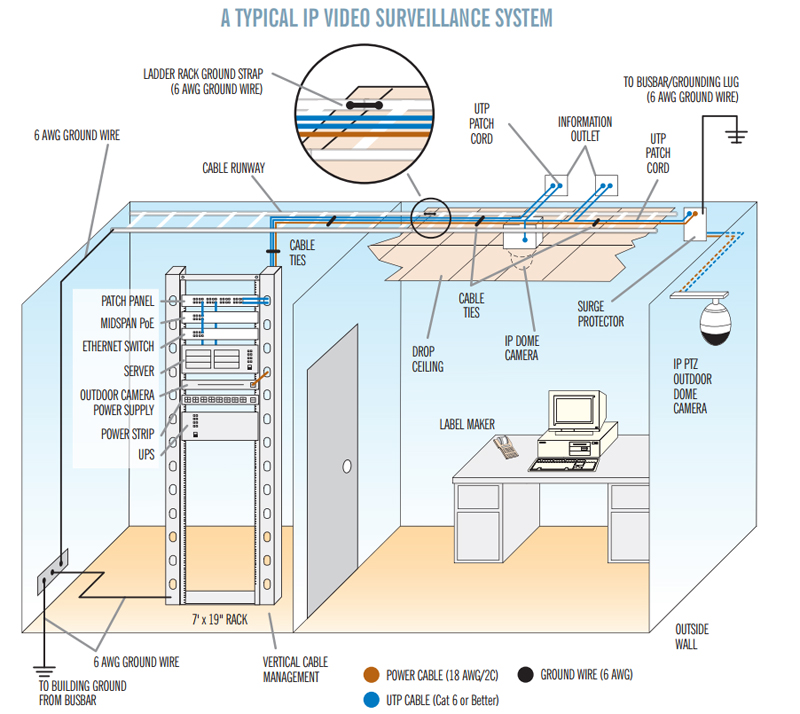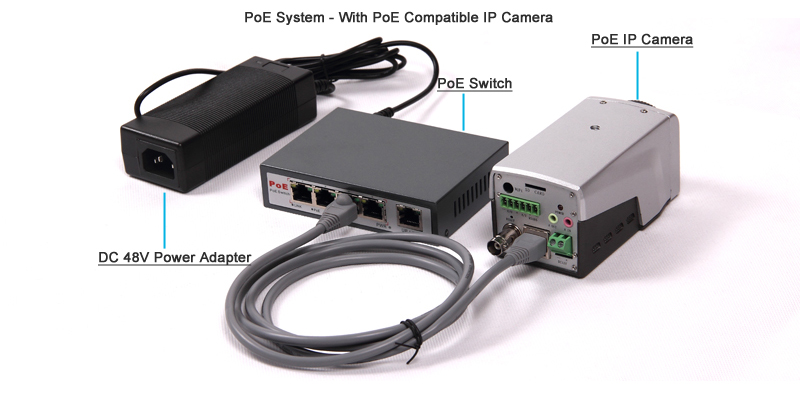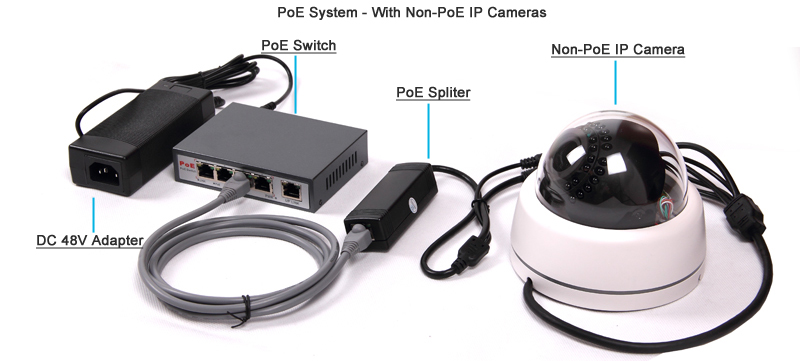How to design a complete IP surveillance system?
Introduction to IP surveillance system
Over the last 20 years, designs of the analog cctv system haven't changed that much. However, traditional cctv surveillance system no longer meet today's needs and future requirements. It's undeniable that security industry is shifting from analog video surveillance systems to IP surveillance systems. For meeting the much higher security demand from client's needs, more and more security installers are beginning to study the IP surveillance technology, and offering IP network based security system for various video surveillance solutions.
The advantages for IP surveillance system.
Since the video footage is compressed digital format, it can be transferred through an single Ethernet cable (LAN or WAN) network, where it can be accessed from anywhere over the internet. Nowadays, industry moves away from analog to digital, and Ethernet cable moves away from traditional coaxial cabling.
Cat5 is the Ethernet cable or called twisted pair which can provide advantages of handing legacy analog devices and newer, smarter digital devices. Traditional video surveillance system also can take advantages from twisted pair cable which can use the video balun to transmit video signal and power supply through single Ethernet cable.
Offering cost security solution and with hassle free installation is the most important factors when security installer or end users to choose IP surveillance system. IP video streaming can implement with power over Ethernet technology, which can eliminate the power cable for IP cameras. IP camera is built-in web server, which can allow user to perform recording, configuration, video analysis, management from anywhere in the world at any time. The video can be viewed on any devices that is IP enabled and also offering free video management software to view and manage IP cameras.
- Cost effective solution: Utilizes Cat5 Ethernet cable for installation, using exist twisted-pair infrastructures for cost-effective, and free maintenance.
- Megapixel resolution:Traditional analog cctv system stagnated in 960H resolution which maximum resolution at 960x480pixels. IP camera can support megapixel resolution which up to 3/5 megapixel resolution, and HD 1080P video streaming and recording.
- Scalability:Unlike the traditional surveillance system, IP cameras can connect to a network and there is no direction connection between the NVR and the cameras. IP video surveillance scales from on camera to thousands.
- System integration:IP surveillance system supports two standards: Onvif, PSIA, which can allow different IP devices compatible each other, and provides an open platform for integrating with other security systems such as intrusion alarm, access control.
- Remote accessibility: Working as standalone unit, supports remotely access and controlled from any location in the world over wireless or wired internet connections.
- Intelligent video analysis: Supporting motion detection, privacy mask, facial recognition...etc video analysis functions, allow the IP surveillance system to work intelligently.

The composition of IP surveillance system
Different video surveillance systems may consist of different products and technologies. A typical IP surveillance system including front-end IP cameras and network switch, VMS or NVR.
IP camera is a video camera with a computer in it. The camera with all the component for video capturing and it also with processor for video encoding and transmitting live images directly over the Ethernet network. Basically, all IP cameras have similar design which including a standard RJ45 port, and built-in web server, multiply network protocols, some of latest models support the power over Ethernet (PoE) feature which meet IEEE802.3af standard. Advanced IP cameras may comes with audio I/O for two way intercom, as well as alarm I/O for integration solution.
Actually, IP camera can work as standalone system with video management software. The VMS can be installed in any PC, it enables video images to be stored, accessed, and controlled, as well as managed from software. NVR is pure network video recorder that works as a network server. Typically, the NVR has several SATA ports to connect with hard driver for video storage. Some advanced NVRs with e-SATA interface to expand its storage to unlimited space.
Power over Ethernet system design
Power over Ethernet technology with many advantages, it plays major role in today's IP surveillance system. The PoE technology can allow user to use single ethernet cable for both data and power connection. It can simplify the installation process, offering plug-and-play installation with 100 meters distances.
PoE system has two main components; the power source, which is typically a PoE network switch that with power distribution system and offering power supply to the powered devices. The power devices, is the device that needs power in order to work properly.
PoE system complies with IEEE802.3af standard which can provide totally 48V DC and maximum output 15.4 watts, and the delivered power to the device can be as low as 12.95watts. There is another standard which is called IEEE802.3at or PoE Plus which can provide minimum 30 watts. The new standard can be used to work with PoE compatible PTZ IP camera which requires high power.

You even can deploy the PoE solution to traditional IP cameras which need separate power supply. Using the PoE spliter to separate the power and data from Ethernet cable to work with traditional IP cameras.

Get My Latest Posts
Subscribe to get the latest updates.
Your email address will never be shared with any 3rd parties.
Tags: IP Camera, IP Surveillance System